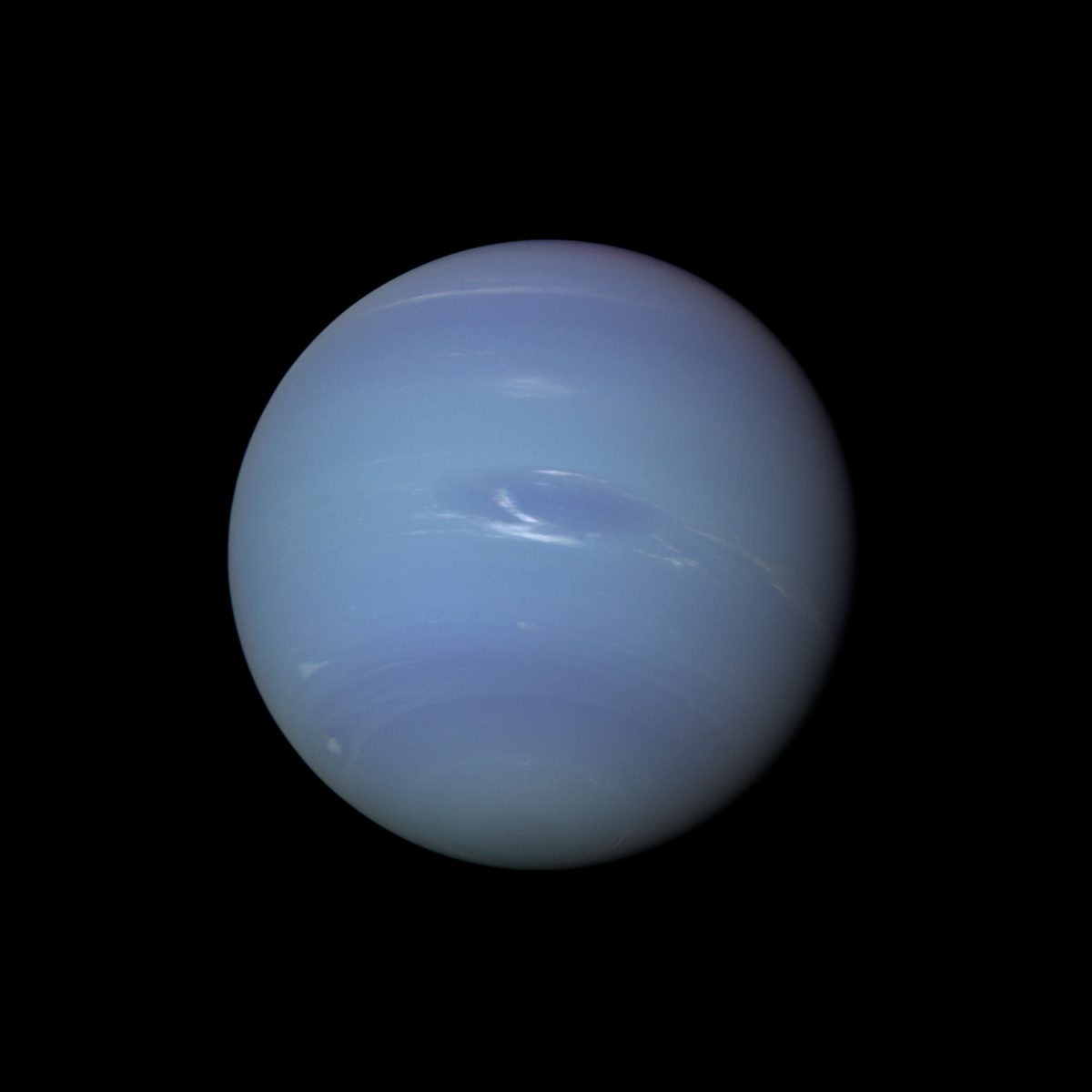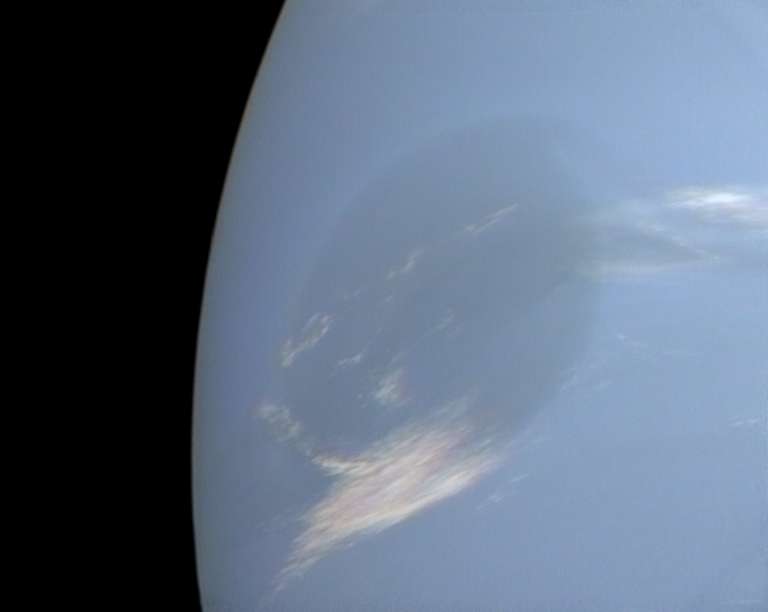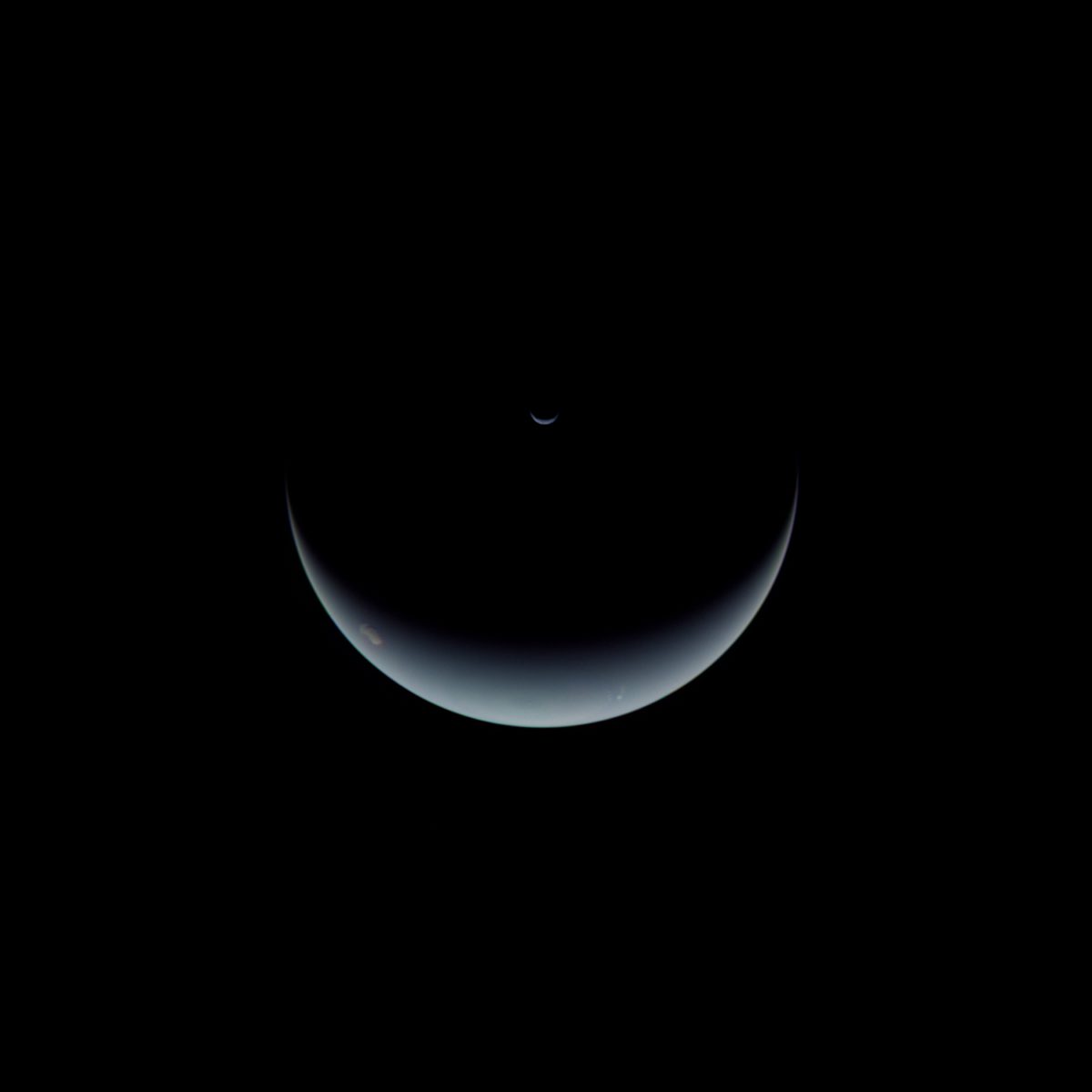Emily Lakdawalla • Sep 20, 2016
Some beautiful new (old) views of Neptune and Triton
Voyager flybys of the giant planets never get old. Here are three newly processed views of the most distant ice giant, Neptune, and its likely captured Kuiper belt object moon, Triton. First, a global view:

Next, a closeup on the Great Dark Spot. Unlike Jupiter's Great Red Spot, Neptune's Great Spot disappeared after the Voyager flyby. From Earth we have been able to see other spots come and go over the decades.

Finally, a departure view, with an appearance by Triton.

I'm glad to add Justin Cowart's work to the expanding amateur image library!
Another amateur working with Voyager data is Brian Burns, who's trying to make automatically processed movies from the Voyager flybys and posting the results on his Youtube channel. Here's just one of them, featuring narrow-angle camera images from the Neptune encounter; at about 2:20 you can see Triton sneaking across the field of view as Voyager 2 departs.
Support our core enterprises
Your support powers our mission to explore worlds, find life, and defend Earth. You make all the difference when you make a gift. Give today!
Donate

 Explore Worlds
Explore Worlds Find Life
Find Life Defend Earth
Defend Earth

